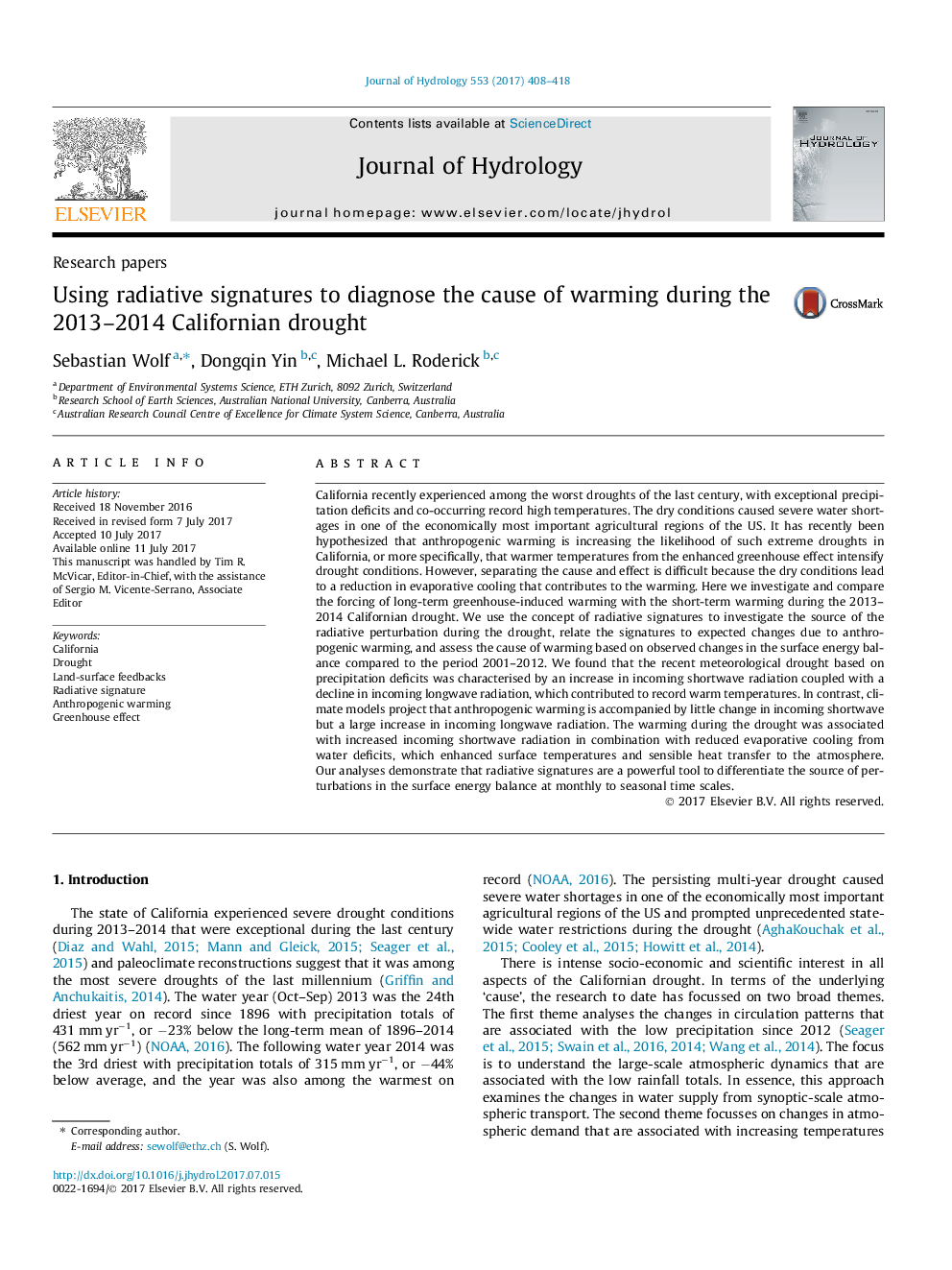| کد مقاله | کد نشریه | سال انتشار | مقاله انگلیسی | نسخه تمام متن |
|---|---|---|---|---|
| 5770827 | 1629901 | 2017 | 11 صفحه PDF | دانلود رایگان |
- Radiative signatures showed increased incoming shortwave and decreased longwave radiation.
- Land-surface feedbacks further contributed to warmer temperatures during the drought.
- Radiative signatures are a powerful tool to differentiate the source of perturbations.
California recently experienced among the worst droughts of the last century, with exceptional precipitation deficits and co-occurring record high temperatures. The dry conditions caused severe water shortages in one of the economically most important agricultural regions of the US. It has recently been hypothesized that anthropogenic warming is increasing the likelihood of such extreme droughts in California, or more specifically, that warmer temperatures from the enhanced greenhouse effect intensify drought conditions. However, separating the cause and effect is difficult because the dry conditions lead to a reduction in evaporative cooling that contributes to the warming. Here we investigate and compare the forcing of long-term greenhouse-induced warming with the short-term warming during the 2013-2014 Californian drought. We use the concept of radiative signatures to investigate the source of the radiative perturbation during the drought, relate the signatures to expected changes due to anthropogenic warming, and assess the cause of warming based on observed changes in the surface energy balance compared to the period 2001-2012. We found that the recent meteorological drought based on precipitation deficits was characterised by an increase in incoming shortwave radiation coupled with a decline in incoming longwave radiation, which contributed to record warm temperatures. In contrast, climate models project that anthropogenic warming is accompanied by little change in incoming shortwave but a large increase in incoming longwave radiation. The warming during the drought was associated with increased incoming shortwave radiation in combination with reduced evaporative cooling from water deficits, which enhanced surface temperatures and sensible heat transfer to the atmosphere. Our analyses demonstrate that radiative signatures are a powerful tool to differentiate the source of perturbations in the surface energy balance at monthly to seasonal time scales.
Journal: Journal of Hydrology - Volume 553, October 2017, Pages 408-418
